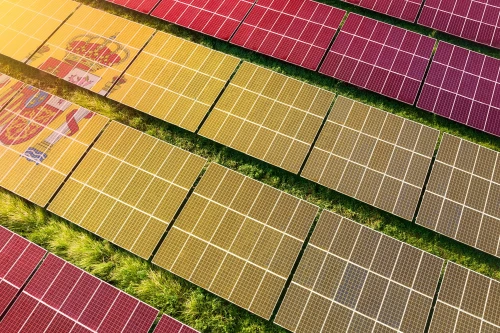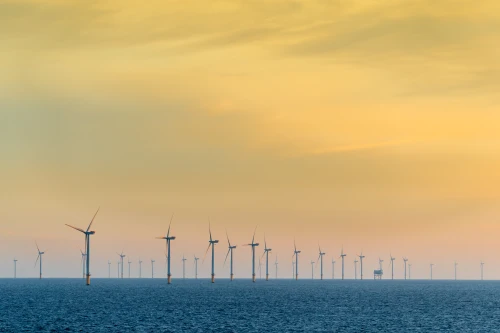
May 9th, 2025
Join our Italian Energy Day on 20 May – Book now
Cap-and-trade is a market-based approach to controlling carbon emissions by setting a limit on pollution while allowing businesses to buy and sell emissions allowances.

Cap-and-trade is a system set by a government emissions cap, which is a restriction set up by the government that allows a certain amount of emissions to be generated up to that cap. Put simply, cap-and-trade is a method of regulating emissions, with the "cap" element refers to a limit on emissions, with a focus on limiting overall pollution.
Trading allowances among companies are also an element of cap-and-trade schemes. Businesses are able to sell off their unneeded allowances and also buy allowances from other businesses, as part of strategies to either increase finances (in the case of the sellers) or to decrease emissions counted under the cap allowance (in the case of buyers).
A step-by-step breakdown of the cap-and-trade process:
Setting the cap – governments determine emissions limits - one ‘allowance’ is worth one tonne of CO2 being emitted.
Allocating or auctioning allowances – there are a number of different distribution methods for allocating allowances: initial allocation, auction or trading.
Trading system – companies are permitted to buy and sell emissions permits by trading them on the energy market. Companies with excess allowances sell their allowances to businesses exceeding their allowances.
Enforcement and compliance – If businesses fail to keep within their emissions allowance, penalties are applied for exceeding limits. Penalties can include heavy fines for non-compliance.
There are many benefits associated with cap-and-trade programs, not least that they encourage companies to innovate and reduce emissions efficiently. For example, companies that are reducing carbon emissions at a low cost are able to sell any allowances they have over at an increased cost to buyers. This allows the companies actively reducing carbon emissions the ability to reinvest the money generated in the cap-and-trade transaction back into renewable energy projects, increasing overall renewable investment.
The success of these types of programs mean that many programs boost economic incentives for sustainability, with cap-and-trade programs, encouraging businesses to invest in renewables and sell of their excess emission allowances.
The schemes can either stand alone as a reduction tool, or be combined with other green policies, such as vehicles efficiency which helps to achieve overall climate goals.
Cap-and-trade programs can also generate government revenue to reinvest in green projects. Governments can auction off allowances, which becomes a revenue stream to be invested back into green projects.
While the aim of cap-and-trade is altruistic, it is still open to criticism in the market.
As a fairly new concept to be implemented, cap-and-trade schemes are susceptible to loopholes and market manipulation. As a method to try and mitigate this, some programs allow banking or borrowing of allowances. This means companies can ‘bank’ or save excess allowances for further in the year, or ‘borrow’, allowances from a year in the future.This helps to stabilise the pricing in the market. The issue with borrowing is that this can strangle allowance supplies from the future year, so many cap-and-trade schemes don’t allow this.
To avoid regulations, some companies will relocate and continue to emit higher levels of carbon emissions, this is called carbon leakage. To try and combat this, governments can allocate some of emissions allowances to covered facilities for free, mitigating carbon leakage to regions that aren’t part of the carbon market.
There is a current debate over effectiveness cap-and-trade versus carbon tax. Cap-and-trade - a price instrument and carbon tax - a quantity instrument - are both designed to reduce carbon emissions but operate in a slightly different way. Carbon tax taxes each unit of carbon dioxide emitted ad encourages the reduction of emissions via incentives. Tax is set against the level of damage a certain type of pollution does. Cap-and-trade by contrast operates on more of a permit system, acquirable by initial allocation, auction or trading. Which is better depends on a number of factors. If the level of environmental damage is the focus, cap-and-trade, however if the cost of cutting emissions is the focus, carbon tax may be more appropriate.
Different governments have designed cap-and-trade schemes differently depending on targets set and the types of greenhouse gases they are looking to curtail.
The worlds first cap-and-trade scheme, the EU ETS is also one of the largest. It covers electricity, manufacturing, industrial, aviation and heat generation - 40% of European greenhouse gas emissions and applies to EU Member States, the European Free Trade Association countries (Iceland, Liechtenstein and Norway).
California’s cap-and-trade scheme is unique to the region and covers a number of different greenhouse gases produced by plants. This includes emissions created by every day operations, such as transport and manufacturing.
China is one of the biggest players in the carbon market, therefore emission-reducing schemes are crucial in this region. China’s cap-and-trade system includes the power industry - a cap is formed by allowances being allocated freely. This adjusts depending on electricity generated during compliance.
One looming milestone is the 2030 emissions target, which will measure regions success in implementing carbon reduction measures.
To help progress towards to these changes, regions are forced to adapt. In California, all cap-and-trade targets are designed around helping California reach its 2030 target: 48% lower than levels in 1990. In Europe, the first net emissions milestone was set at reducing emissions to 50% compared to 1990 by 2030, but these milestones have been increased to 62% by 2030 and compared to 2005 levels rather than 1990.
As cap-and-trade systems evolve, their effectiveness in reducing global emissions will depend on transparency, regulatory improvements, and integration with other climate policies.
Make better decisions with all the data you need to analyse European energy markets.

May 9th, 2025

May 8th, 2025

May 7th, 2025